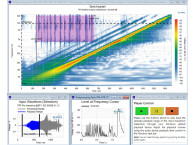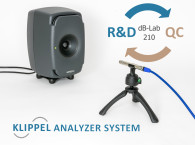The Klippel QC software has been upgraded with a new automation control interface and multi-channel support for any Windows or ASIO audio interface, as well as wave-file based open loop testing. The updated software includes more flexible options for testing and synchronization and for smart or stand-alone audio devices.
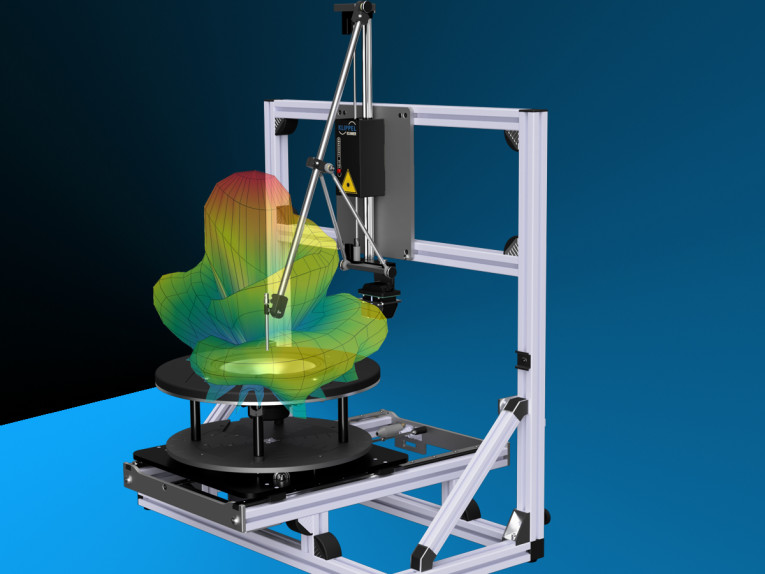
Comprehensive Scanning Solutions
As Klippel explains, a gap has been filled for acoustic spatial measurements using a smaller form factor than the established, large Near-Field Scanning System (NFS). Based on the popular vibration scanner hardware (SCN), Klippel has added automated acoustic scanning and the full spatial characteristics of sound sources by holography. The recently announced SCN-NF hardware add-on extends the capabilities of existing vibration scanners to those of a multi-scanning workbench for other useful sensors such as microphone, probes, and magnetic sensors. The main application allows users without access to anechoic rooms to perform acoustic scanning, obtaining accurate acoustic measurements in normal rooms. Typical devices under test are transducers and small audio devices, including portable and smart speakers.
Advanced holographic analysis suppresses room reflections as well as modes. Based on far less points then required for a conventional directivity measurement on a fine acoustic grid in greater distance, a near field measurement reveals an analytical description of the source and therefore can provide spatial data at any distance outside the scanning surface and at any resolution. Important output results include directional characteristics such as balloon plots, directivity plots, sound power and many more. Whereas the large Near-Field Scanner allows full and half space measurements, the Multi-Scanning Workbench is focused on half space configuration (using a baffle).
The typical test time starts from as low as 5 minutes when assuming rotational symmetry. A full scan without any symmetry assumptions takes about 1 hour. The Multi-Scanning Workbench (formerly SCN hardware) now comes as complete hardware platform for vibration and sound pressure (or other domain) scans. Two separate software packages are available for mechanical and acoustical analysis.
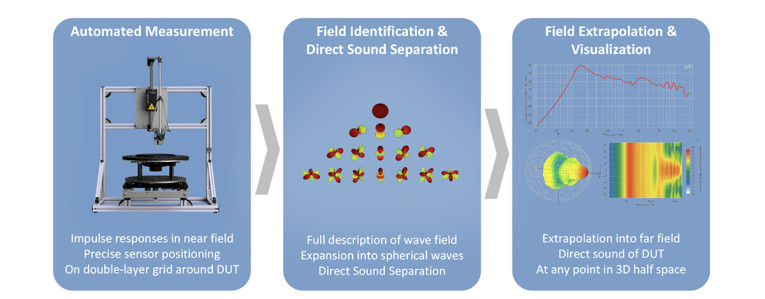
The updated vibration scanning software now supports an automated laser calibration and verification. To position sensors at any location, a simple positioning frontend for the individual axis has been added. Based on vibration data, rocking modes can be detected reliably and the root cause of rocking can be identified. The Rocking Analysis Module (RMA) is released now and has received substantial improvements to guide the user effortlessly from measurement to analysis. A clear indication is given if the device under test has a critical rocking behavior which may result in reduced output, audible distortion (Rub&Buzz) and early failure (field rejects). The actual scanning time for a rocking analysis takes usually less than 10 minutes. This allows testing multiple devices of one batch to isolate systematic behavior from random effects.
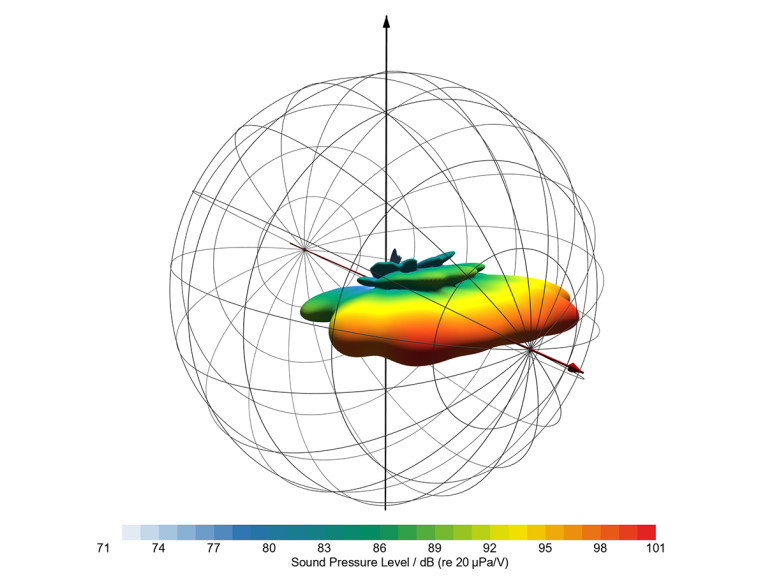
Distortion Analysis
The updated dB-Lab software now adds Multi-Tone Measurement (MTON). "Multi-tone stimuli are quite useful test signals due to their music-like properties with the advantage of direct distortion measurement at the non-excited spectral bins. Therefore, multi-tone distortion provides a much more realistic picture than a pure sine tone measurement and the corresponding harmonic distortion analysis," Klippel explains. The MTON module has a new option to specify the crest factor (impulsiveness - ratio of peak and rms value of the stimulus) which is important for high power tests and for accurate emulation of real-world music material.
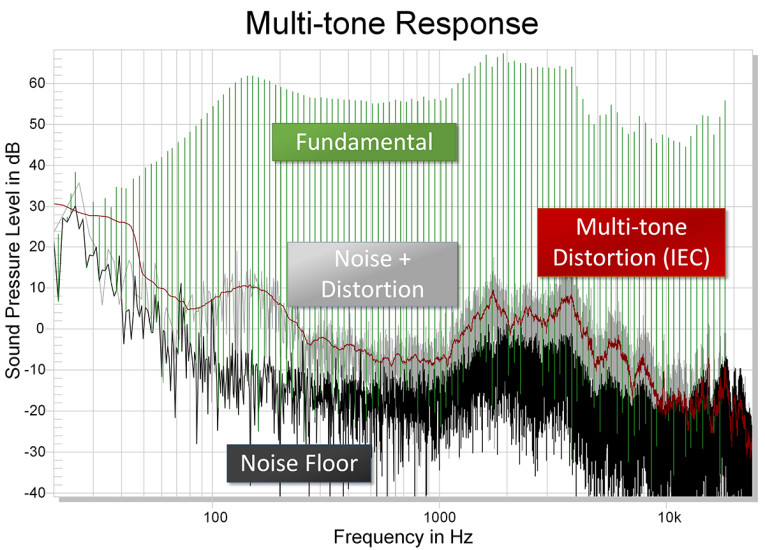
Stepping and cycling tests allow automatic thermal and non-linear compression measurements. To protect the device under test, several limits can be defined to avoid damaging when increasing test levels automatically. For transducers or passive systems, electrical, mechanical and acoustical signals can be analyzed and conclusions can be drawn for distortion generating mechanisms. The MTON module supports testing of any active audio system with wireless connections (e.g., Bluetooth) and compensates for potential frequency jitter.
Simulation
The existing SIM and SIM-AUR non-linear simulation modules received a corresponding tool for linear simulation (LSIM) with this dB-Lab 212 update. In contrast to many available tools, the LSIM targets the overall design for more efficient, light weight, smaller (green) speakers. Users are able to tune maximum peak voltage, voltage sensitivity and efficiency for a given program material and application requirements. Automatic EQ-tuning is available and with just one click, and the effects on peak displacement and spectral properties of the response are predicted. A full set of all relevant states is analyzed and the corresponding transfer behavior is plotted.
The LSIM module is also optimized to work with the Klippel Controlled Sound (KCS) solution. When starting to work with the module, users benefit from a simple user interface, interactive networks and enclosure configuration, as well as geometry-based parameter input.
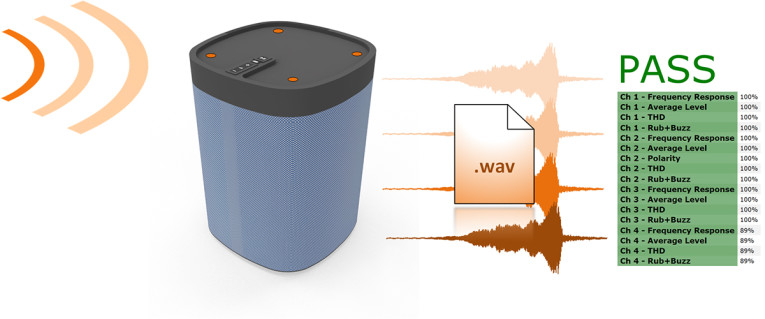
End of Line Testing
For Quality Control the updated Klippel QC software allows testing a wider range of applications. Using the new Automation API software interface, complex test scenarios can be implemented and controlled. This API is the successor of the long existing IO-Monitor interface, which is still supported. It can be integrated easily in popular script languages such as Python. The before-mentioned sensor management routine is available for Klippel analyzers, soundcard-based interfaces, digital audio devices and wave file analysis. Sensor files can be shared with R&D software and result charts are correspondingly scaled and labeled.
The software updates also expand the multi-channel capabilities, supporting directivity-controlled devices with beam forming, speaker and microphone arrays. The wave file processing features are supported for any non-Klippel front-end, up to 15 channels, as well as 128 channels. Using the input signal sharing feature, one measurement can capture many signals that are automatically distributed to multiple analysis tasks. This considerably reduces test and setup time. Open loop testing was improved to analyze multiple wave files in one test sequence, as well as better support for mixed configurations of Klippel hardware and external audio devices. Typical examples are testing sound emitting devices and microphones without audio streaming access using wave file stimuli and responses.
www.klippel.de



